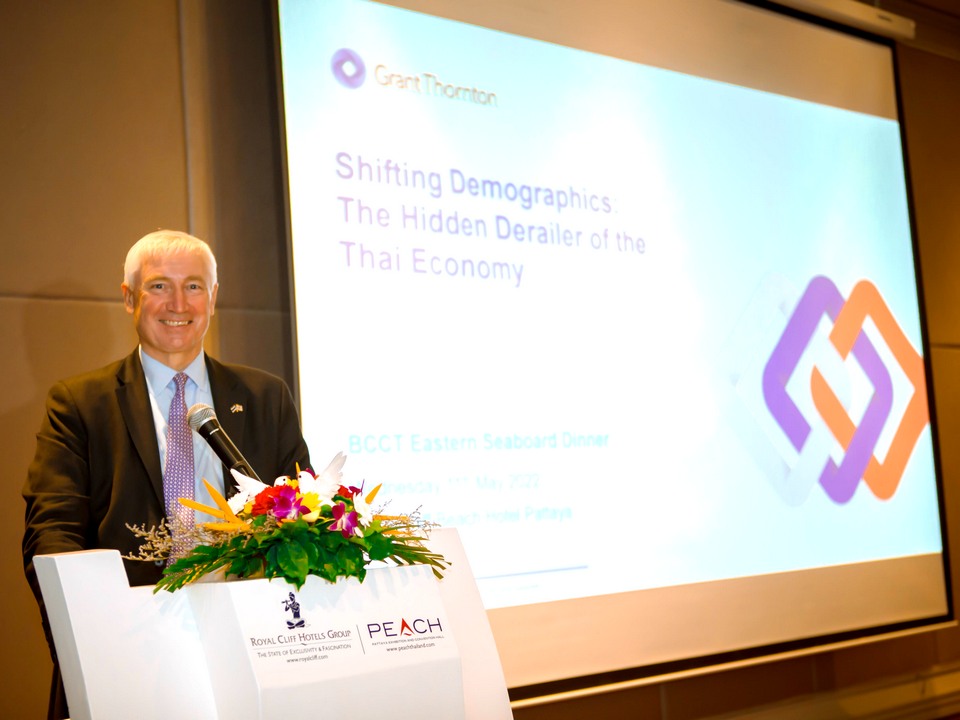
Business leaders across Thailand, like their counterparts around the world, have been waiting over two years for the pandemic to disappear, so that life – and economic growth – can get back to some sense of normality once again. Though understandable, this mindset hides an important truth: Even if the perfect vaccine is somehow invented tomorrow, then instantly produced and administered worldwide to a willing population, Thailand would still be unable to return to its pre-COVID economic trajectory.
The problem boils down to simple demographics. Thailand, like a number of other countries, is currently undergoing a pair of developments whose implications are hugely underappreciated.
The lifespan of its citizens is much longer than in generations past.
Fewer and fewer babies are being born each year.
In combination, these two trends are turning Thailand into a rapidly ageing society, in which a shrinking number of working-age people must strain to support a growing number of retirees. The COVID-19 virus, in addition to its direct human and economic cost, has also distracted countries like Thailand from the urgent task of addressing this growing demographic crisis.
At present, for every 100 working-age people in Thailand, there are roughly 42 people who are either too young (under 15) or too old (over 65) to participate in the workforce. This age dependency ratio grows larger each year, placing an ever-increasing economic burden on the country’s labour force.
Eventually, the demographic balance will no longer hold, making economic collapse inevitable if nothing changes. In the case of Thailand, this tipping point is already within view, and all that remains is the question of what we are going to do about it.
The seriousness of the situation is currently being marked by ‘The Great Resignation’, as it is referred to, where pre-COVID workforces have not always returned to the jobs they held previously – if they have returned at all. Many have taken the opportunity to rebalance their work/life priorities, and what type of work they wish to do.
Admittedly, anyone who has found themselves stuck in a Bangkok traffic jam, or squeezed into an overcrowded Skytrain, may not share this sense of urgency. It’s easy to think that the population is already high enough, and that declining birth rates might not be such a bad idea.
Our aim here is to show why this type of thinking, although understandable, fails to grasp the genuinely disruptive consequences that a shrinking workforce and ageing population would bring about. These consequences will need to be dealt with sooner rather than later, and both the private and public sector must take active measures to guide society safely through this crucial period of demographic change.
Cause for alarm
The statistics are sobering. Between 1963 and 1983, Thailand welcomed over 1 million births per year. This number has fallen below 600,000 in each of the past two years, leaving markedly fewer people to help build the country’s economy moving forward.
Moreover, Thailand’s fertility rate has been under the replacement level (2.1 births per woman) every year since 1995. The current rate of 1.5 births per woman puts Thailand squarely within the growing list of nations whose populations are on pace to fall precipitously.
This trajectory is actively bringing about a “population crisis” for the country, according to demographic experts. A ‘super-aged society’ is defined by the UN as having over one-fifth of its population over the age of 65, and Thailand is on track to fall into this category by 2035. With household debt already at 90% of GDP, the country is ill-equipped to see its own workforce shrink even further while simultaneously taking care of an increasing number of elderly people.
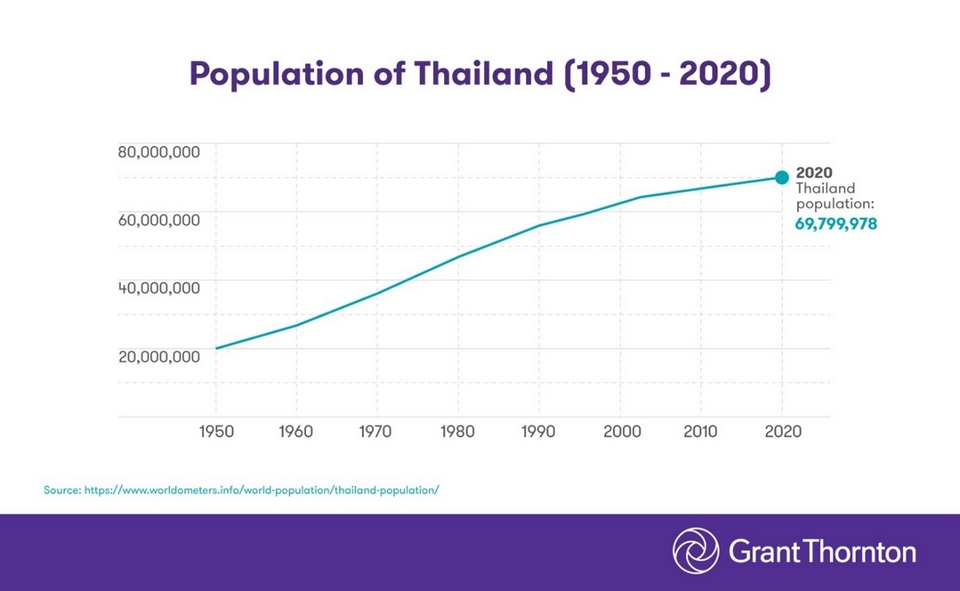
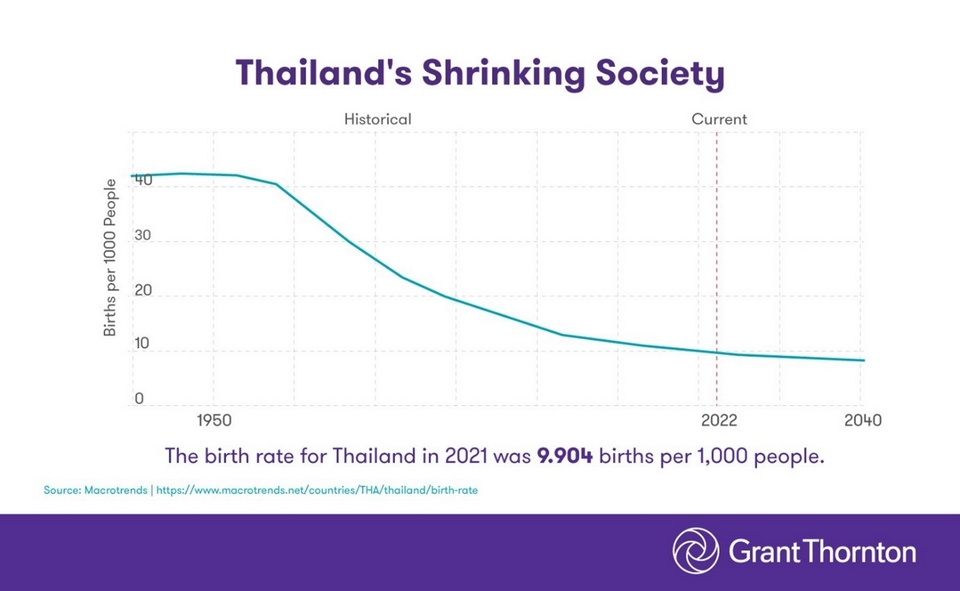
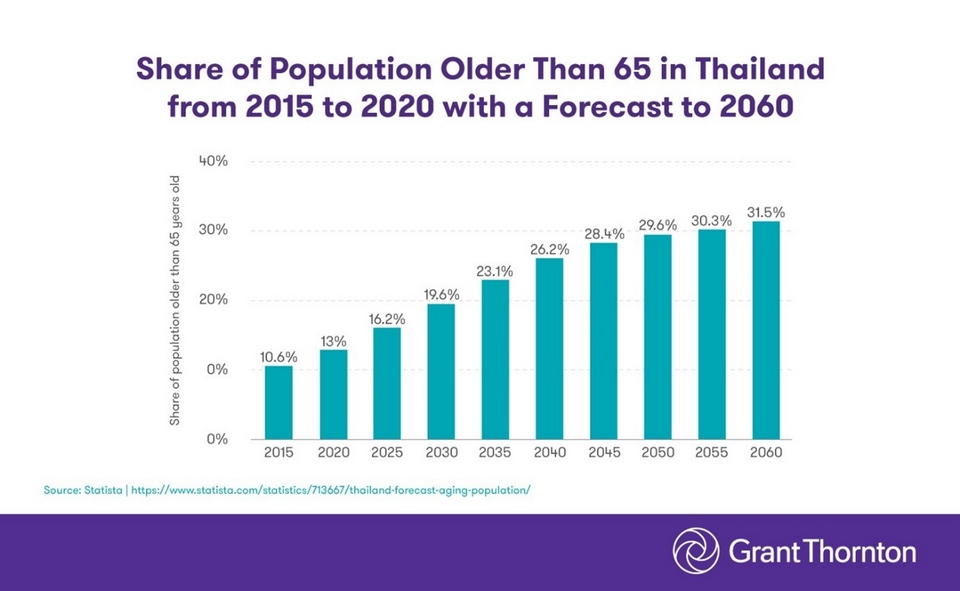
Nor is Thailand alone. Similar trends are increasingly evident across ASEAN and beyond, with a recent global study estimating that “the number of over 80-year-olds will soar from 141 million in 2017 to 866 million in 2100.” Still, the main issue is not about absolute numbers, but rather “the uniformly negative consequences of an inverted age structure,” according to researchers.
Just as a building needs a solid foundation to stay upright, society needs a strong and productive workforce to continue functioning. If this engine of economic productivity is diminished, we will begin to see institutions fail due to lack of resources. At that point, the gap between rich and poor will cause greater resentment, making social stability very difficult to maintain. Thailand already has one of the largest, if not the largest, wealth gaps in the world.
Elon Musk has argued that declining birth rates are among the biggest dangers to human civilisation, and he may be right. Growing numbers of experts have begun advocating urgent action to help raise global birth rates and to begin addressing the demographic challenges of a rapidly ageing world.
Why is this happening?
The ongoing pandemic has raised economic insecurity, prompting many young adults to move back in with their parents. New norms for remote learning and working, alongside other restrictions on gathering in public spaces, have reduced the quality and quantity of social interactions for millions of people.
In a related development, many people are choosing not to return to their old jobs or ways of working, both multiplying and masking the negative impact of an already shrinking workforce. The tourism sector has felt the consequences of this shift particularly acutely, as companies struggle to attract former employees back into the industry. COVID is partly to blame here, as is the Great Resignation phenomenon, but in actuality it is the simple mathematics of an ageing society that makes such an employee shortage inevitable.
Indeed, the trend toward lower birth rates had already been well established long before anyone had heard of COVID-19. See, for example, the results of a study published in 2015:
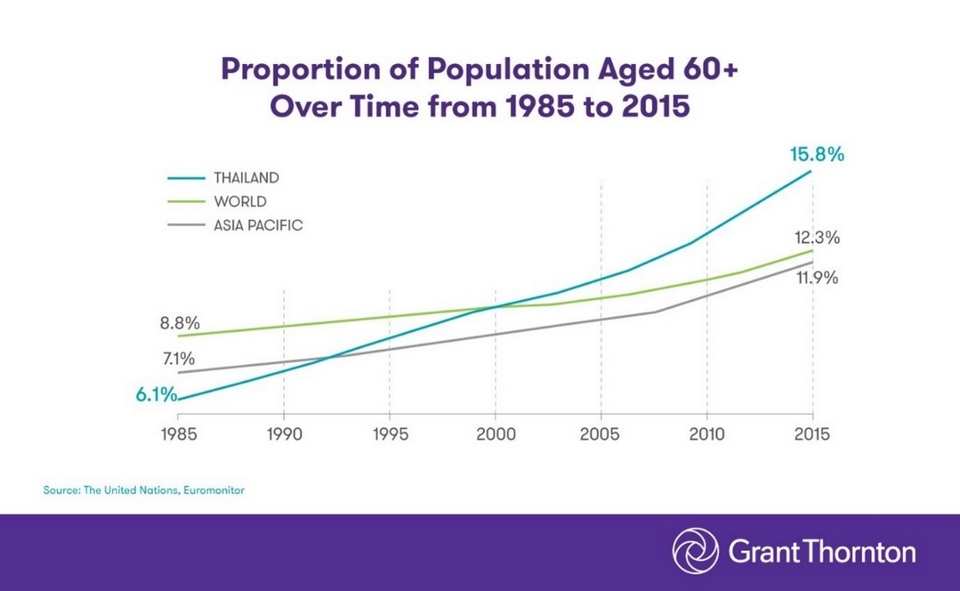
Moreover, note how low the percentages were just a generation or two ago. Modern Thailand was built by a youthful workforce whose efforts were applied energetically to the task at hand. As digital technology enables another period of rapid transformation in the years ahead, a similar push will be needed.
The line on the graph curves upward for a number of reasons, many of them salutary. Healthcare has improved, helping people live longer; life expectancy has reached 74.2 years for men, and 81.3 years for women. Women now have more work and life opportunities than in generations past, and people’s hopes and dreams increasingly extend beyond the limits of their own families. The positive nature of these advances puts us all in a very difficult position, as we essentially become a victim of our own success: We would never undo such wonderful progress in the name of having more children.
Naturally, rising living costs also play a role in people’s decision to have fewer babies. Concern over daily expenses is almost certainly tied to the fact that Thailand’s urban population (now over 50%) continues to increase. As property demand increases, costs go up – and more families choose not to have kids.
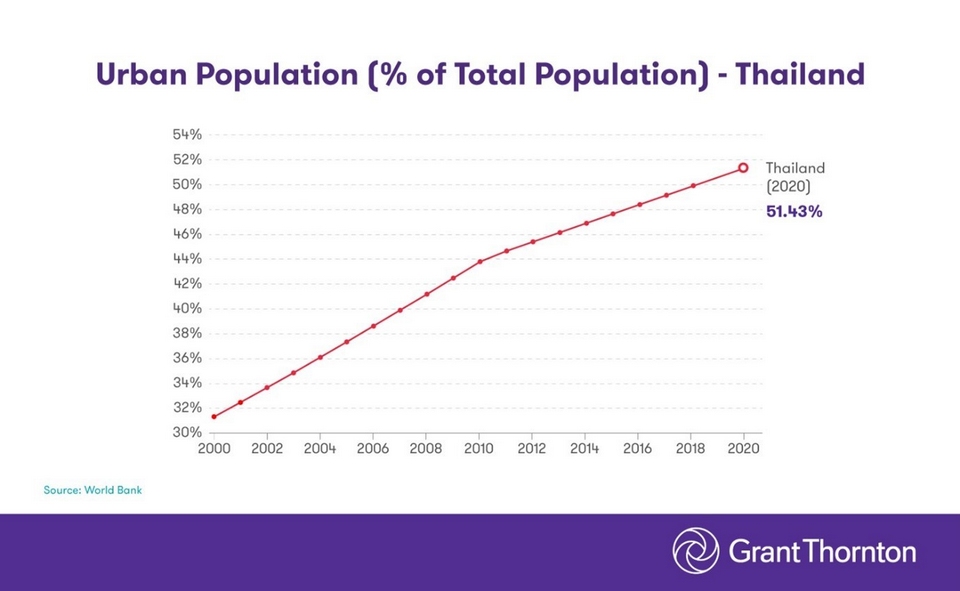
Numerous other factors also contribute to lower birth rates, as we see below:
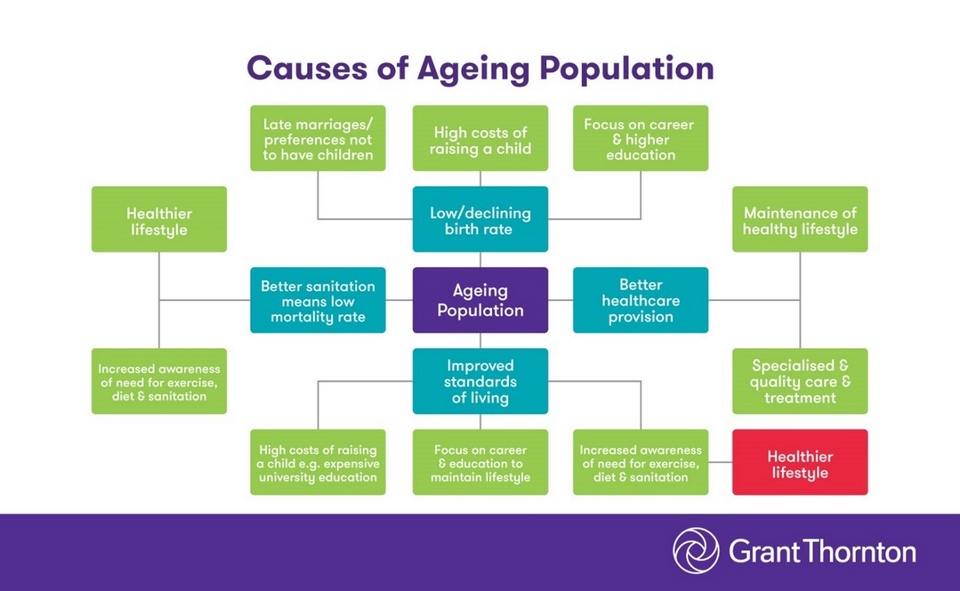
Ideally, Thailand 4.0 would be built and operated by a flood of young, well-educated, technically minded programmers and engineers. On such a foundation, decades of vibrant economic growth in Thailand – and the improved quality of life it unlocks – would be all but assured.
Yet through no fault of their own, the incoming generation of talent is relatively small in number, has different expectations of employment and lacking in both technical education and experience. A sweeping educational initiative might allow the skill gap to be addressed – but at present, with so many variables working against Thailand, the country faces a real uphill climb.
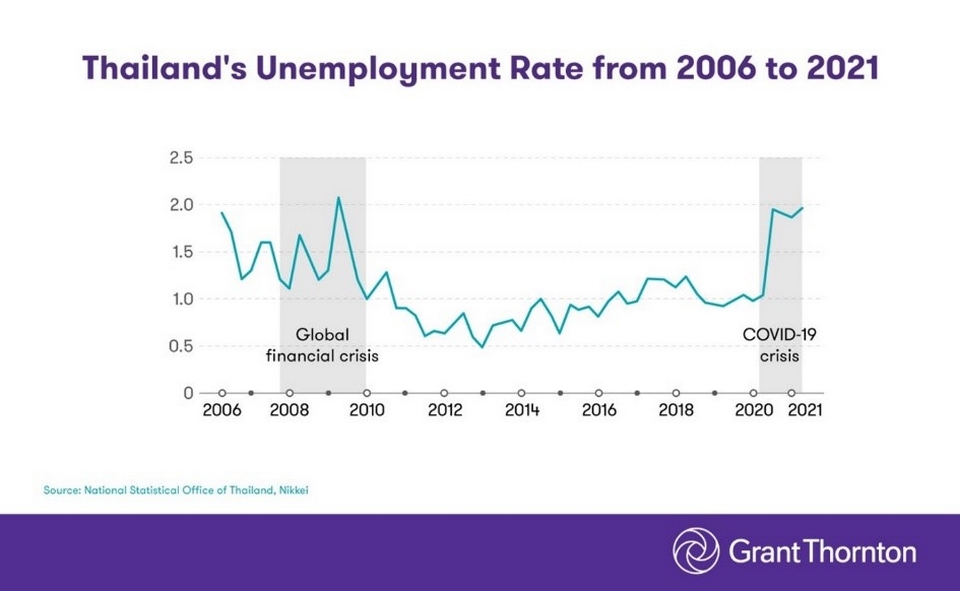
Leaving the past behind
The climb becomes more daunting when we consider that Thailand’s pre-COVID economic growth will not return again, at least in its previous form. Though mass vaccination will enable the loosening of most restrictions, tourism could take years to bounce back, if ever, as the world simply has less disposable income than in years past and other destinations offer better value for money. Zoom has likewise reduced the market for business travel, whilst increased freight and production costs hinder exports.
Simply put: New strategies are required, not a return to old ones. While the pandemic has accelerated business trends surrounding tech-based communication and online shopping, it has also accelerated the failure of older business models. These must be left behind, as the world is changing too quickly for pre-pandemic business ideas to be of any use today.
To move forward, we must understand our situation at the most basic level. Every company is in the business of solving problems, and there are many problems to be solved. If the population of elderly people is to increase, then the private sector should focus on serving the needs of that population. This is a great market opportunity for companies that are seeking new growth areas.
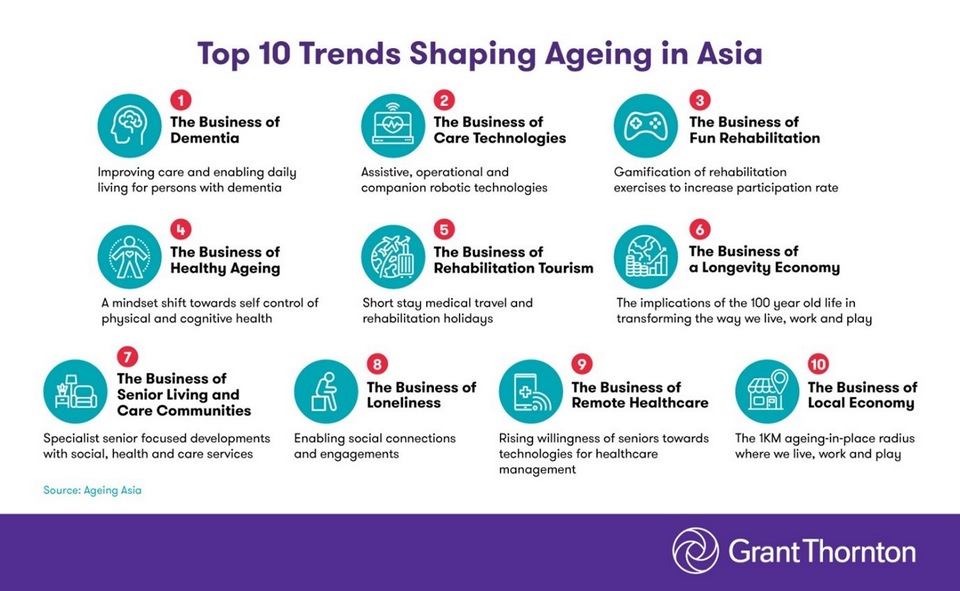
If technology is the future, then companies should digitise their operations and use robotics to supplement their teams. This transition will need to be performed with a delicate touch, as employees may develop concerns about job security as their workplace increasingly embraces robots and algorithms. Yet similar fears spread during the Industrial Revolution, the introduction of the assembly line, and every other period of technological advancement, and work opportunities continue to increase. Open lines of communication with employees, strong internal training programmes, and a clearly articulated strategy for growth, can alleviate these concerns while also promoting synergy among teams.
If talent is scarce, then skilled employees will have more leverage on the labour market. Companies should therefore invest in initiatives that address growing employee concerns, such as personal and mental health, and a sensible work-life balance. To retain and attract talent, a positive corporate culture, complete with a meaningful vision and mission, will likewise be a necessity. If we want the next generation of employees to carry such a heavy burden, the least we can do is inspire them.
If local applicants don’t have the technical skills needed for certain tasks, then either the task itself can be outsourced, or the company can make the decision to bring in foreign talent. If the right preparations are made, foreign staff can even work remotely without entering Thailand at all. Once again, certain enticements such as creative freedom, a flexible working schedule, and opportunities for career growth can facilitate both the recruitment and retention of such employees.
Lastly, business leaders should recognise that they don’t interview potential talent, so as much as the talent interviews potential employers. Scoff if you like, but this is the way it should be. Companies should want employees whose ability gives them leverage on the job market. They should also want people who make decisions based on what interests them, rather than people who are passively selected and dutifully obey. The mere acquisition of talent does not necessarily imply that that your workforce is engaged, assertive, or coordinated; as we enter the post-pandemic era of rapid adaptation and digital transformation, companies will need to get the most value from all the talent they can access.
How Thailand can address the situation
Investment in modern education must be at the forefront of Thai government policy if the country is to fulfil its economic aspirations. Consider the types of jobs that will define Thailand’s digital growth moving forward:
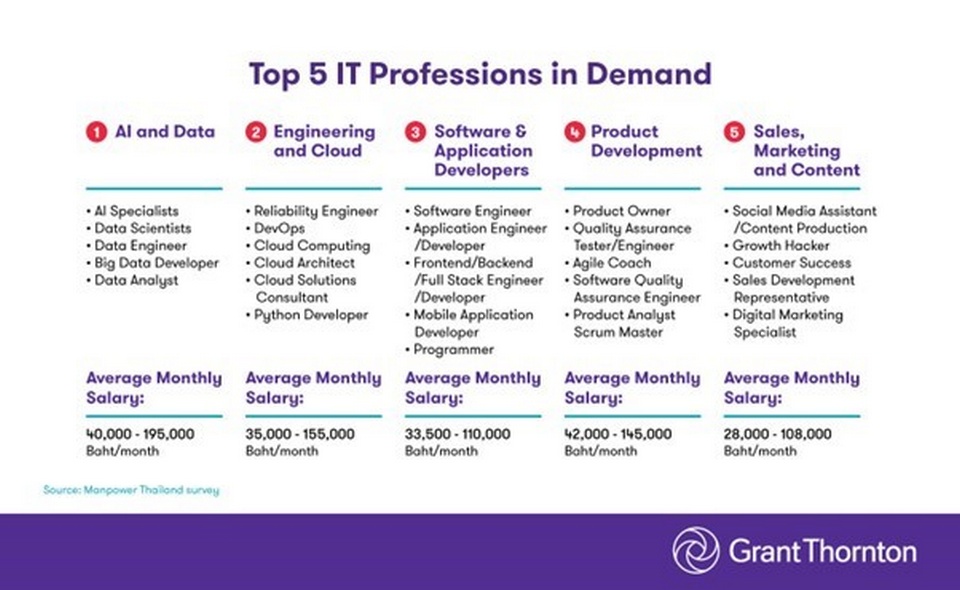
Less skilled positions will also remain in demand across the region – but as they create limited productivity and lower growth potential, Thailand would be wise to let other countries focus on that kind of development.
It is worth stressing that digital innovation will be at the heart of most (if not all) Thai economic growth in the years to come. To its credit, Thailand recognises the importance of this sector even more than its neighbours:
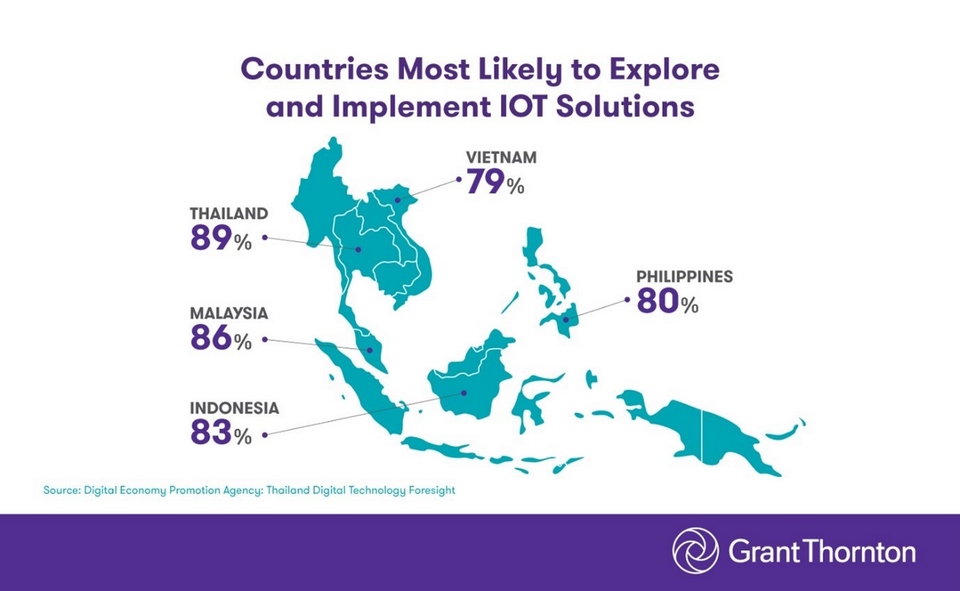
And yet the country presently lacks the foundation of IT education needed to fulfil these expectations. In the short term, foreign experts can make up part of the talent shortfall. A more lasting solution, however, involves the Thai education system undergoing a digital transformation of its own.
This modernisation of Thai education should be accelerated as quickly as possible, as only technological mastery will allow Thailand to do more with fewer people. In such a scenario, a certain amount of foreign labour will still be needed in the decades ahead, but only to fill the types of semi-skilled positions that a generation of well-educated Thai people would consider themselves overqualified for.
Getting to this point requires an appreciation for quality over quantity, however, as high schools and universities must do more than merely add new subjects to an old curriculum. It is long past time to reconceptualise the country’s approach to learning itself.
Our current information age thrives on creative thinkers, whose willingness to experiment with new ideas must be nurtured by inquisitive learning rather than rote memorisation. Public and private educators must therefore recognise the real demands of tomorrow, and empower students to meet these demands with courage and energy.

Such skills will be needed to pursue the clearest path of development for Thailand: Sustainable manufacturing. The country’s incentive programmes correctly prioritise Bio Circular Green projects, in addition to digital innovation and advanced manufacturing. This vision is admirable, but the Thai government has not yet put forth a clear roadmap detailing how the aspirations of the BCG initiative will be fulfilled.
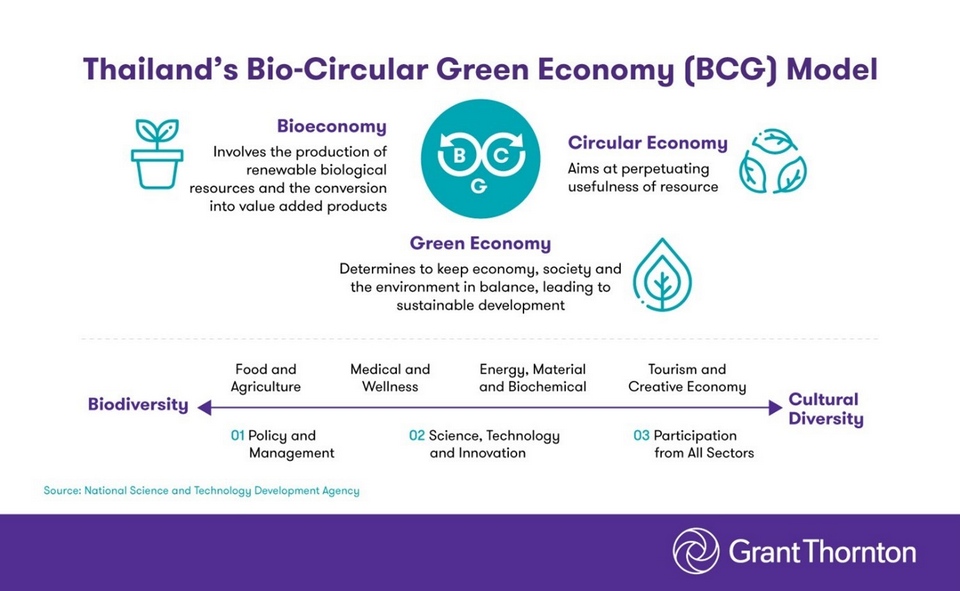
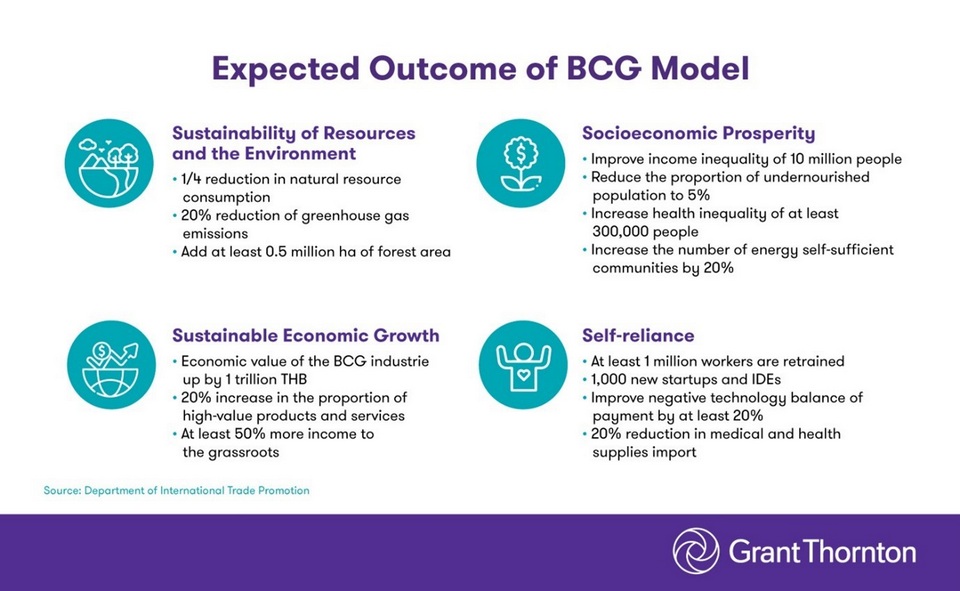
Moreover, Thailand’s workforce is simply not equipped to make a sizeable leap forward yet – and therefore the country cannot make full use of any foreign direct investment that it attracts. Here, as elsewhere in the Thai economy, education serves as the limiting factor. If guided by the right strategy, an educated and upskilled workforce can implement the kinds of green initiatives that preserve resources and eliminate waste across a variety of industries.
Education can also unlock the kinds of innovation needed to serve Thailand’s growing elderly population. Telemedicine and related services will become increasingly important in this regard, with new business opportunities also emerging to address rising market demand for leisure among retirees. These new markets will be won by creative, innovative companies – exactly the qualities that Thailand’s education system needs to nurture moving forward.
At the same time, the Thai government must recognise that knowledge and expertise have a habit of disappearing from the workforce if they aren’t actively preserved. By providing publicly funded child care, for example, more professionals would be able to continue working after having kids. In fact, such a service could inspire more couples to have children in the first place – a net public good, for reasons explained above.
Poor health and social unrest likewise reduce economic productivity, if not kept in check. An improved public health care system, ideally one which also offers free fertility treatment for interested couples, could keep the population healthy and productive while encouraging larger families. Failure to offer these types of public services could lead to social resentment, as the poor are in effect denied the kinds of health and fertility services that the rich are able to obtain.
This awareness of the wealth gap and other social fault lines will need to be incorporated into all relevant government initiatives, so as to preserve stability amid times of change. Consider also that Thailand’s ability to fund aged care will depend on tax increases which, if communicated poorly or implemented unfairly across various social strata, could fuel the types of costly protests that have brought other countries to a standstill in recent years.
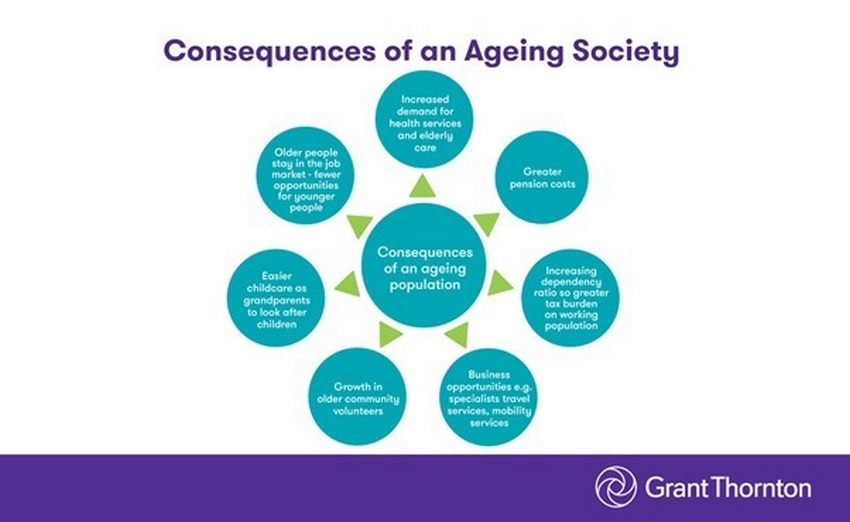
Other initiatives will likewise need to be conducted with similar levels of sensitivity, such as loosening the rules for businesses that seek to hire foreigners at all levels, and making it easier for companies to restructure their operations, which often includes laying off workers. And this brings us to the government’s second responsibility in leading the nation forward: Clearing a path for business.
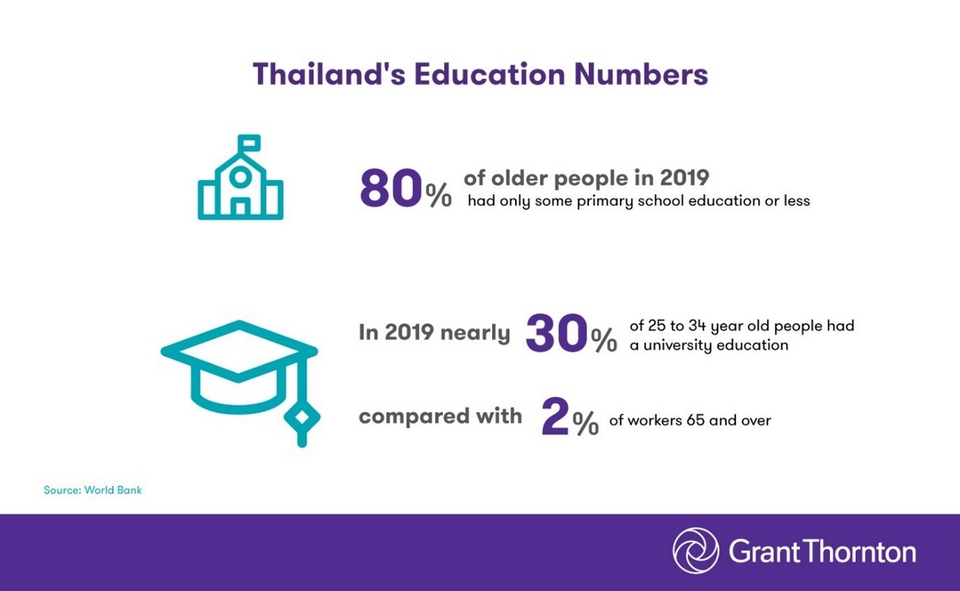
Current Thai labour law discourages companies from replacing longer-serving employees with younger, better educated counterparts whose skills are better suited to today’s business climate. By forcing employers to retain their older workers, the regulatory apparatus prevents them from modernising at precisely the moment that their need to adapt is greatest.
In the short term, this law does what it was designed to do – protect the interests of employees who worry about job security. In the medium and long term, however, it handicaps Thai businesses by denying them a suitable workforce with the right skills and productivity to carry Thailand’s economy forward. As any failure to keep pace on a national level will hand a competitive advantage over to other ASEAN economies where labour costs are cheaper, the net result could be an export of jobs to Thailand’s neighbours. In effect, the inflexible continuation of this policy would sacrifice the potential of Thailand’s younger generation, for the temporary benefit of ageing workers.
Now more than ever, Thailand needs to shake free from its comfortable traditions, see itself as a regional and global competitor in the digital age, and cultivate a generation of talent that can lead the country forward. Success in this realm will be self-reinforcing; the more Thailand can improve its future business climate, the less it will be affected by the pandemic-era ‘Great Resignation’, and the more specialists from abroad will want to lend their talents to business endeavours here.
First steps
Changing demographics are both a threat and an opportunity. A choice to do nothing will undermine Thailand’s future prosperity. But if the country acts now, changing its approach to education, it will build a workforce with the attitude and skills for tomorrow, embracing technology, operating at a higher level of productivity, and placing itself once again ahead of its neighbours. Complementary changes to employment laws will also help drive up productivity and wealth creation.
Thailand’s ageing society is a whole-of-society problem, which in turn can only be solved through a coordinated response between the public and private sectors. The state must do all that it can to promote sustainable birth rates, while adapting its education system as quickly as possible to the needs of the modern world. Regulators must also recognise that it is in the country’s economic interest to help businesses streamline their operations, and bring in new talent wherever they can find it.
For private organisations, another delicate period of adaptation will be necessary, with several steps worthy of consideration as soon as practicable. Suggested actions:
1. Incorporate innovation and tech-based optimisation into your operations at every level to fit the new social and business environment. Refined processes will let you increase overall productivity, even as the talent pool grows quantitatively smaller.
2. Define your employee value proposition (EVP) to attract, motivate and retain employees. Why should they work for you rather than elsewhere?
3. Commit to retraining and upskilling your workers. This will let you pick up where Thailand’s revamped education system leaves off, enabling continued learning throughout the careers of your personnel. Such an employee-centred approach is necessary if businesses are to truly benefit from the aforementioned innovations, including new technology and AI in particular.
4. Define a clear goal for each employee training module. Omnidirectional training quickly becomes diluted, turning opportunities into distractions. Skills development should be specialised, with a tight focus on the core needs of the company.
5. Streamline by outsourcing. Tomorrow’s successful businesses will have empowered employees tackling new problems, management focussed on future strategy, and non-core activities outsourced for greater efficiency. Most companies simply do not have enough managerial bandwidth to expertly handle both core and non-core functions in-house. Core (by definition) should take priority, while the remainder is handled externally.
6. Seek out ways to serve the growing needs of the country’s ageing population. Whether your business operates in the field of healthcare, food and beverages, hospitality, digital entertainment, or a range of other sectors, there will almost certainly be new opportunities to serve the elderly people of Thailand. Find them.
7. Refresh your business strategy for the new environment. Make sure you understand who your target customers are and why, as well as your margins and cash flow. Remember the adage: Turnover for vanity; profits and cash for sanity.
These recalibrations will not come easy for many companies, particularly with cultural complications threatening to derail any attempt at internal change. Each new policy must therefore be accompanied by a positive underlying vision, communicated clearly and coherently to employees.
For help developing or implementing these strategies, get in touch with Grant Thornton in Thailand. Our experts can assist with everything from ideation to implementation, and can even handle outsourced administrative tasks to let your organisation focus on its core activities. Contact us today to find out more.
 |
 |
 |





